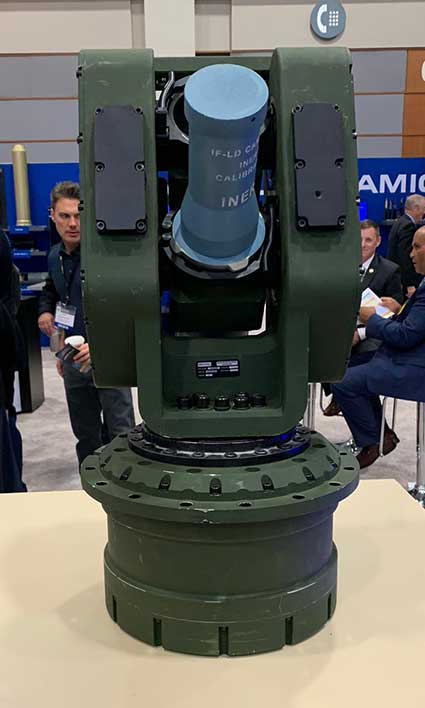
The IDF is evaluating a new configuration of the Iron-Fist lightweight active protection systems (APS) for the protection of medium wheeled vehicles such as the 8×8 Eitan Armored Personnel Carrier and tactical trucks. The system is also considered for the protection of heavy bulldozers.
The IDF is the world’s leading user of APS. Since 2011 Israel’s Ministry of Defense has committed hundreds of million dollars for the acquisition and fielding of up to 1,000 Trophy APS equipped Merkava Mk3, Mk4 and Namer combat vehicles produced by Rafael.
Following the 2006 Second Lebanon War with increased demand for APS, Trophy, and Iron-Fist were both evaluated to provide a new level of protection to the IDF Merkava Main Battle Tanks. The two systems employed different kill-mechanisms. Trophy’s countermeasures fires explosively formed projectiles against the threat, destroying the incoming projectile at a distance with a direct hit. This method requires the sensors to deliver faster, and more accurate target parameters to position the countermeasure to kill the threat.
Iron Fist harness the shockwave caused by the countermeasure’s blast to smash the target. The launcher sets the fuze and selects the elevation to deliver the projectile in a trajectory to proximity of the threat, to a position where it delivers the maximum effect. This method provides the vehicle with hemispheric protection. Given the massive blast, a successful intercept can be computed with less accurate input.
Following a detailed evaluation and testing the IDF preferred Rafael’s Trophy, assessing the system’s higher level of maturity. Indeed, Trophy was proven in combat and, since its first deployment in 2011 Trophy defeated over 40 attacks of various types of anti-tank rocket grenades and anti-tank guided missiles.
IMI did not keep its system idle either. The system raised much interest among armored vehicles manufacturers and military forces abroad, exposing IMI to wider requirements, beyond the immediate needs raised by the IDF.

A major point of concern for foreign users was the collateral damage risk posed by the APS hard kill systems, its weight, and complexity of integration. To address these aspects IMI redesigned the Iron Fist, introducing a distributed system providing more flexibility to address the different platforms and customers that wanted to test the Iron Fist. The result was a broader capability range, integrating soft and hard kill, and adaptation of the system to light, medium and heavy platforms.
The result was the introduction of the lightweight and decoupled variant that enables flexible positioning of the system’s sensors, comprised of three or four radars from RADA, attached with two infrared sensors providing threat detection, classification, and tracking. The system also employs two countermeasure turrets and the control unit installed inside the vehicle. Known as the Iron Fist Light-Decoupled (IF-LD), these systems are being evaluated for installation the M-1280 and JLTV, M-2 Bradley, soon to be tested by the US Army. The system was also displayed at the AUSA 2018 exhibition on General Dynamics Land Systems’ Griffin III, a ‘concept vehicle’ GDLS is proposing for the US Army Next-Generation Combat Vehicle.
Another lightweight variant of Iron Fist Lightweight Configuration – IF-LC, is an ‘all in one’ system where radars, EO sensors, processor and countermeasures launcher are all mounted on a single pedestal protecting the vehicle over 360 degrees. This variant is being integrated with BAE Systems’ CV90.
Both IF-LD and the IF-LC are installed on top of the existing armor and do not require removal of protection modules or penetration of vehicle’s armor.





















